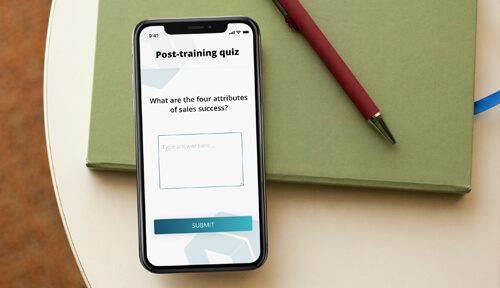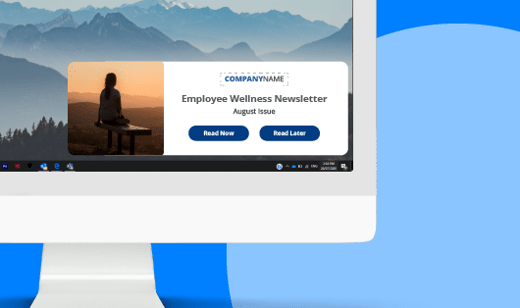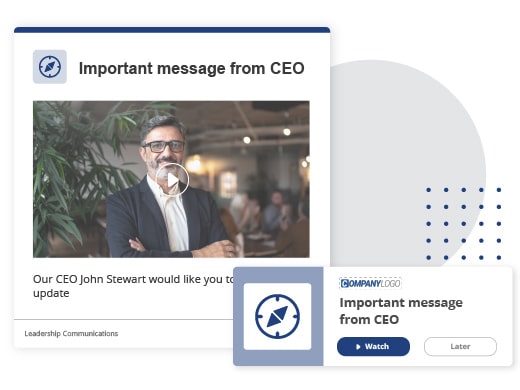
With a reputation wrought with burnout and high-stress levels, it’s no surprise that the financial sector doesn’t have the best track record when it comes to employee engagement.
In fact, just 15% of workers in financial services had high levels of engagement.
These unengaged employees are costing your business big time. Gallup estimates that disengaged employees have 37% higher absenteeism, 18% lower productivity, and 15% lower profitability.
This adds up to a grand total of $350 billion each year for the US economy - that’s $3,400 to $10,000 in salary per disengaged employee.
So how do you recoup those lost profits? By stepping up your engagement efforts.
When you invest in your workforce, productivity increases, customer service improves, and profitability rises by 21% with a team of engaged employees.
But to reap the benefits of employee engagement, you must first understand how to improve it. Read on to find out what you can do to turn your team into a well-oiled and motivated machine.
1. Provide Opportunities for Professional Development
Giving your employees meaningful opportunities to participate in professional development can work wonders when improving engagement. 60% of employees surveyed in this Gallup report said being given opportunities to do what they do best has the greatest impact on their engagement levels.
Professional development isn’t just about offering a few training courses here and there. To be effective it must be supported on a systematic basis with a culture of learning where employees consciously and continuously seek, share, and apply new knowledge.
Move beyond one-size-fits-all training courses by asking employees what they want out of their careers and providing pathways for them to get there. The results will form a solid foundation for you to collaborate on setting actionable short-term goals that help them achieve success with long-term professional growth.
Keep learning dynamic and interactive. Employees learn better when problem-solving rather than reading through dense textbooks. Implement flexible e-learning platforms and additional training so you’re not contributing to an employee’s already overflowing plate.
Use interactive Quizzes to reinforce crucial information and add an element of gamification to boost involvement.

A crucial part of this is making sure opportunities for development are well communicated. Make sure to create time and space for employees to both acquire knowledge and think critically. Use Staff RSVP Invitations to collaborate and share. Check-in on those who don’t respond to see what kind of learning they would most like to see.
2. Prioritize Health And Wellness In The Workplace
Financial wellbeing is always top of mind for the financial sector. But in an industry where more than a third of absences are due to poor mental health, the same can’t be said about employee wellbeing.
When engagement and high wellbeing are present in a workplace, the benefits of engagement are amplified. Of the employees working in these conditions (about 12% of the U.S. working population), 92% are thriving.
Promoting healthy behaviors such as taking regular breaks and encouraging a healthy work-life balance are some easy places to start. Screensavers are a great way to raise the profile of workplace wellness programs and encourage positive working practices.

Use Surveys to seek employee input and involve employees in conversations around wellbeing so you can tailor programs to their specific needs. Offer regular health and wellbeing check-ins so you can monitor the well-being of your staff and put measures in place to improve it.
Newsletters are a great platform to share wellbeing practices with your team. Get employees to contribute ideas to give them a sense of ownership and increase participation. Be transparent about why certain things aren’t included so you don’t discourage future participation.

Want to try these for yourself in your organization? Start a FREE trial of SnapComms today!
3. Keep Employees Updated On Company Goals
According to Dale Carnegie Training, 70% of employees who lack confidence in senior leadership showed poor engagement in their work. Employees look to senior management for direction and confidence in a company’s future – and yet most of us will have worked in places where leadership feels more like big brother.
Improving employee engagement starts by leading and communicating with intention. 80% of employees are more engaged when their work aligns with the company’s mission and core values. It’s important that leaders guide their employees through a shared purpose and vision to inspire them to do the kind of work they want to see.
Offer periodic company updates about the organization's big picture. Regularly sharing organizational goals helps employees understand how they fit into them. Video Messages provide a great platform to communicate company goals, leadership updates, and inform employees on the latest news releases on a more human level.

To be successful, recognition needs to be done at all levels of the organization. Research shows that the most memorable recognition comes from an employee’s manager (28%) or a high-level leader (24%).
Company Newsletters are powerful tools in communicating business updates in an engaging, visually appealing way. Don’t forget to schedule regular feedback sessions and Q&A to facilitate two-way communication.
4. Show Employees Recognition And Appreciation
In today’s war for talent, employers tend to neglect a rather obvious tool in improving engagement and ultimately retaining their talent – employee recognition. In a report from Achievers, 72% of companies surveyed ranked recognition as one of the top drivers of employee engagement.
But only one in three workers in the U.S. strongly agree that they’ve received any recognition or praise for their work in the past seven days. Employee recognition isn’t just about remuneration, it’s showing staff you value their contributions by acknowledging the behavior, effort, and accomplishments in supporting business goals.
Getting leadership to send out Videos Alerts recognizing top performers and long tenure employees is a great way to show employees that their hard work is valued. This can also be done using Digital Signage.

Individual recognition also sends a message to other employees about the behavior they should model. Acknowledge significant employee tenures and contributions by giving them pride of place with Lock Screen messages so the whole organization can recognize their efforts.

Employee engagement is about more than just providing frivolous perks and quick fixes, it’s about listening to your employees and creating working conditions that allow them to operate at their greatest so they can give their best to your business.
For more great tools and ideas to improve your engagement, contact our team. Better yet, download our Employee Engagement In Financial Services infographic for a summary of the key takeaways from this article.


